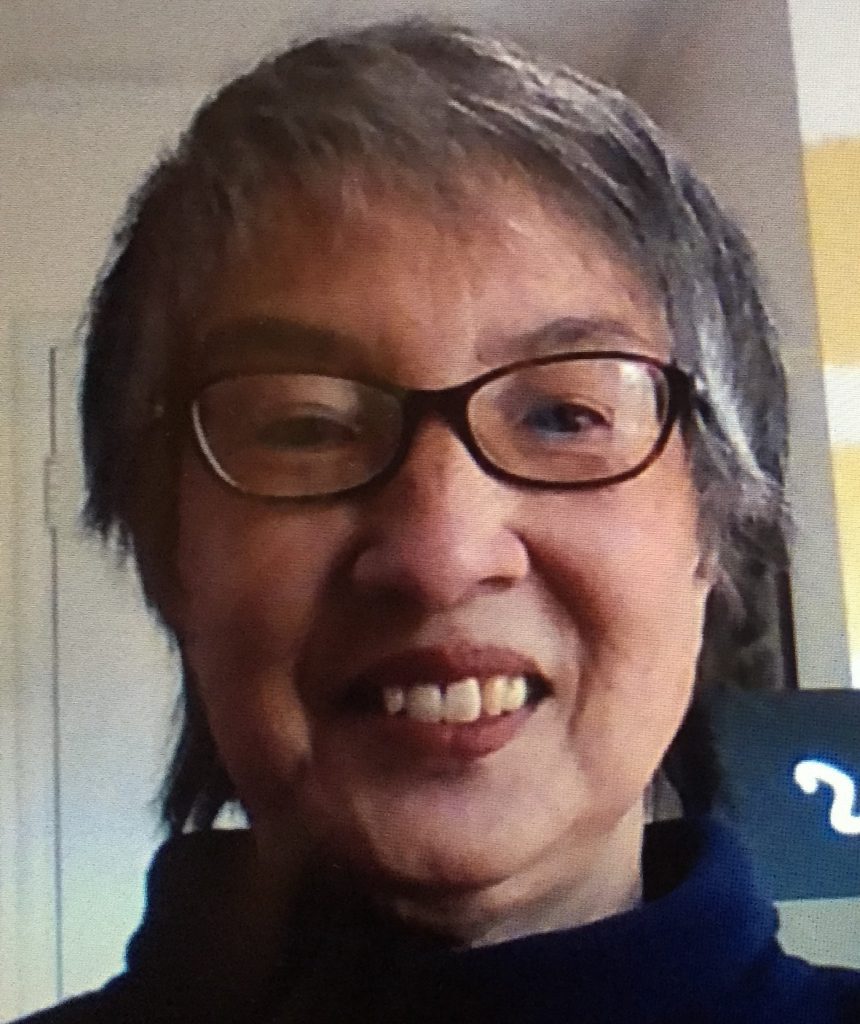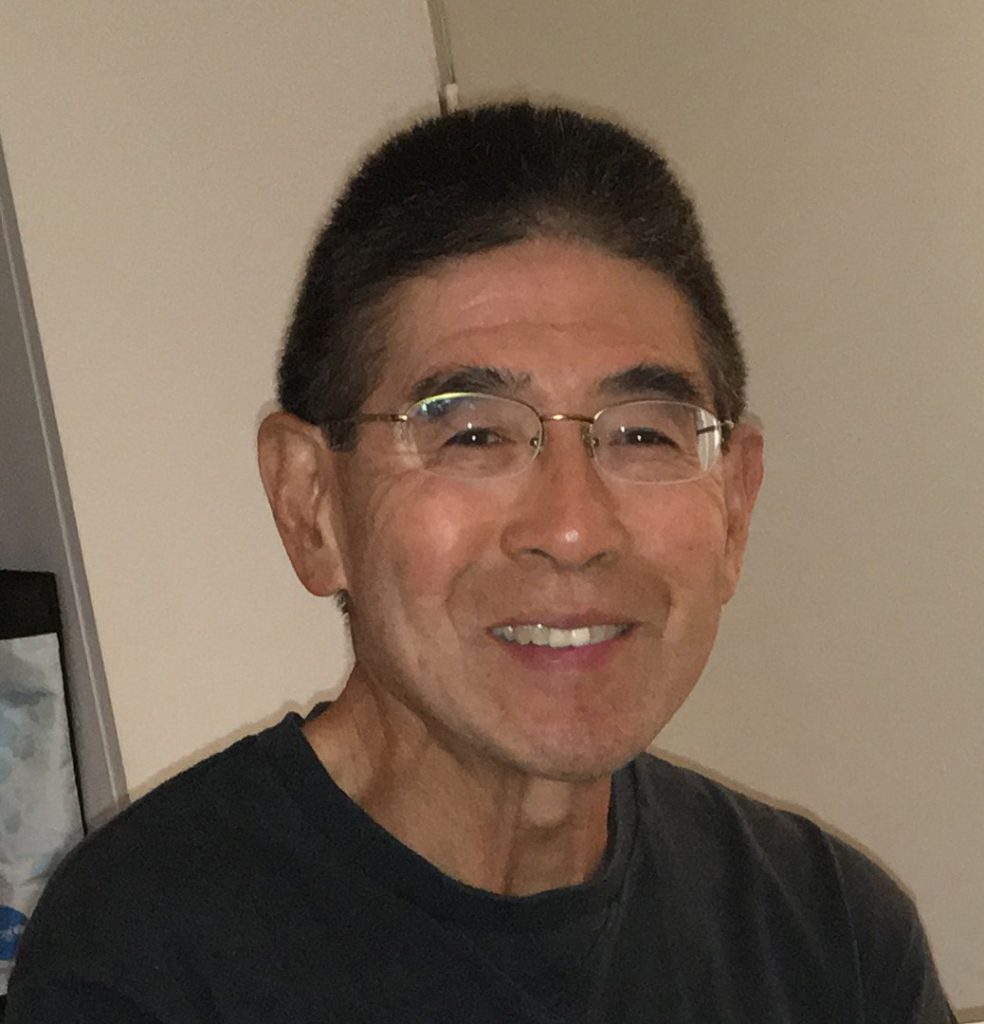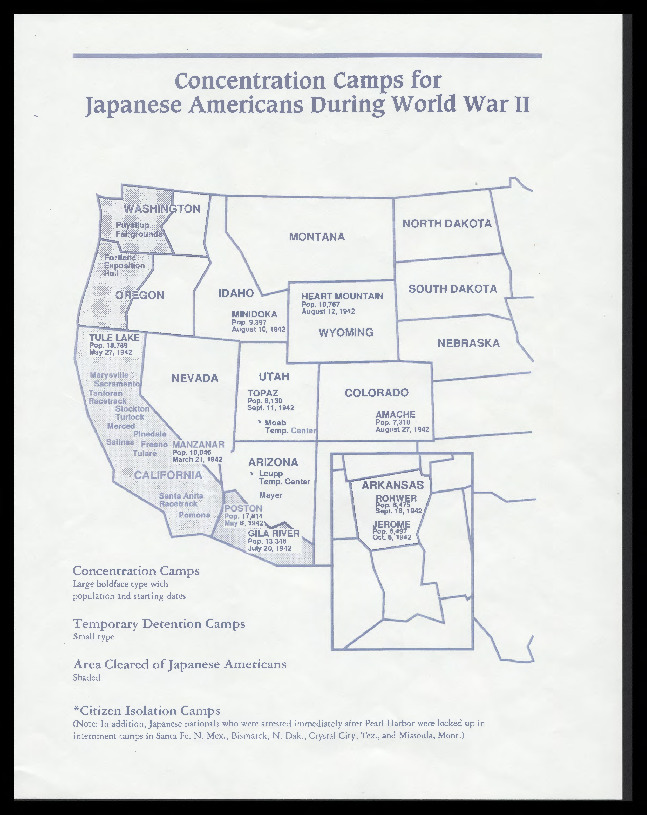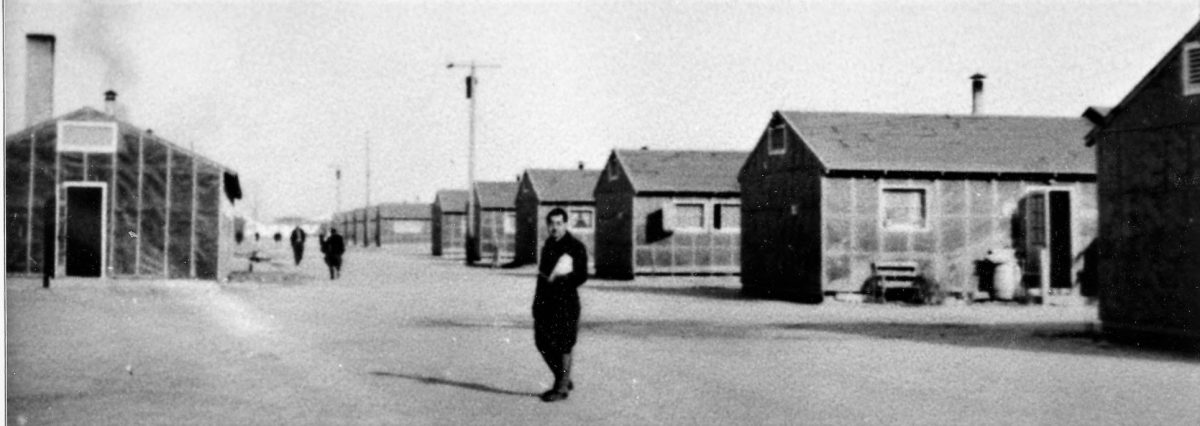June 2, 2021 (Season 3, Episode 2, the recording in 48 minutes) Click here for the BuzzSprout version of this Speak Your Piece episode. The above photograph is of an unidentified man standing amid tar paper covered Topaz residential blocks, circa 1942-1945. Courtesy of the Peoples of Utah Collection, Utah Division of State History.
This episode of Speak Your Piece is based on a digital exhibit Topaz Stories: Remembering the Japanese American Incarceration, and includes selected readings of some deeply personal and painful stories written and gathered by both detainees and the children of those incarcerated at the Topaz Internment Camp (1942-1945).
PODCAST EPISODE:

Ruth Sasaki is a sansei, born and raised in San Francisco after World War II. Her short story “The Loom” won the American Japanese National Literary Award, and her collection, The Loom and Other Stories, was published in 1991 by Graywolf Press. Two of her stories were aired on NPR’s “Selected Shorts,” and a short film was made from her story, “American Fish.” Ruth is the editor of the Topaz Stories Project; her mother’s family–including her grandparents, mother, aunt, and uncle–were incarcerated in Tanforan Assembly Center in California and then at Utah’s Topaz War Relocation Center.

Born in 1946, Jonathan Hirabayashi grew up in the small farming communities of American Fork and Pleasant Grove, Utah. In 1956, his parents returned to the Santa Clara Valley (California). After college graduation and service in the U.S. Army, he returned to school to receive a B.A. in art. After 5 years as a graphic designer at the Oakland Museum, Jonathan started his own firm designing and fabricating exhibits.
The imprisonment of Americans of Japanese ancestry during World War II (1941-1945) is one of our nation’s worst violations of civil rights against American citizens. Holding to a racially biased and misconceived notion of “military necessity,” over 120,000 men, women and children of Japanese descent–two-thirds of them American citizens–were removed from their West Coast homes and imprisoned. Some were able to leave the camp for employment, or for higher education, and eventually to join the Arm Forces. In contrast only a very small number of first generation German and Italian immigrants, whose country of origins were also at war with the United States, were subjected to incarceration.

The community of Delta, Utah (130 miles southwest of Salt Lake City) offered itself, and was selected by War Relocation Administration (WRA) as one of ten internment camp locations. Initially known as the Central Utah Relocation Center, the Topaz camp was built in the Sevier desert some 16 miles northwest of Delta. A total of 11, 212 individuals, most from the San Francisco Bay area, were processed through Topaz from September 11, 1942 to October 31, 1945.
This digital exhibit Topaz Stories began as a physical exhibit, installed in various places in northern California including in Emeryville. To read about this exhibition click here. It is anticipated that Topaz Stories will be installed at the Utah State Capitol in early summer 2022 and remain there until the year’s end.
The editor for Topaz Stories was Ruth Sasaki, and the exhibit and graphic designer, Jonathan Hirabayashi, today’s SYP guests. Both also contributed personal family stories, and both served as readers for the selected stories shared in this episode.
OTHER SOURCES TO CONSULT:
- Topaz Museum — Japanese American WWII Internment Camp (Delta, Utah). Open Monday through Saturday, 10am to 5pm. The camp site is one of Utah’s fourteen National Historic Landmarks.
- Smithsonian Institution’s podcast Sidedoor (Season 7: 12.15.2021), entitled “Chiura Obata’s Glorious Struggle,” relates the life and work of Chiura Obata, a renown University of California Berkeley artist, who was incarcerated for nine months in the Topaz Camp. The Topaz Stories story “Horse, Shadow, Moon,” uses Chiura Obata art to illustrate poetry by an issei man.
- Lauren Fields, “8 things you may not know about Japanese-American internment in Utah,” Deseret News, Feb 18, 2019, 10:00pm MST
- Utah State University’s Topaz Japanese-American Relocation Center Digital Collection
- US National Archives —Japanese American Internment
- Japanese American National Museum (JANM:100 N. Central Ave., LA, CA., 90012)
- 50 Object/Stories: The American Japanese Incarceration
Do you have a question or comment? Write us at “ask a historian” – askahistorian@utah.gov

